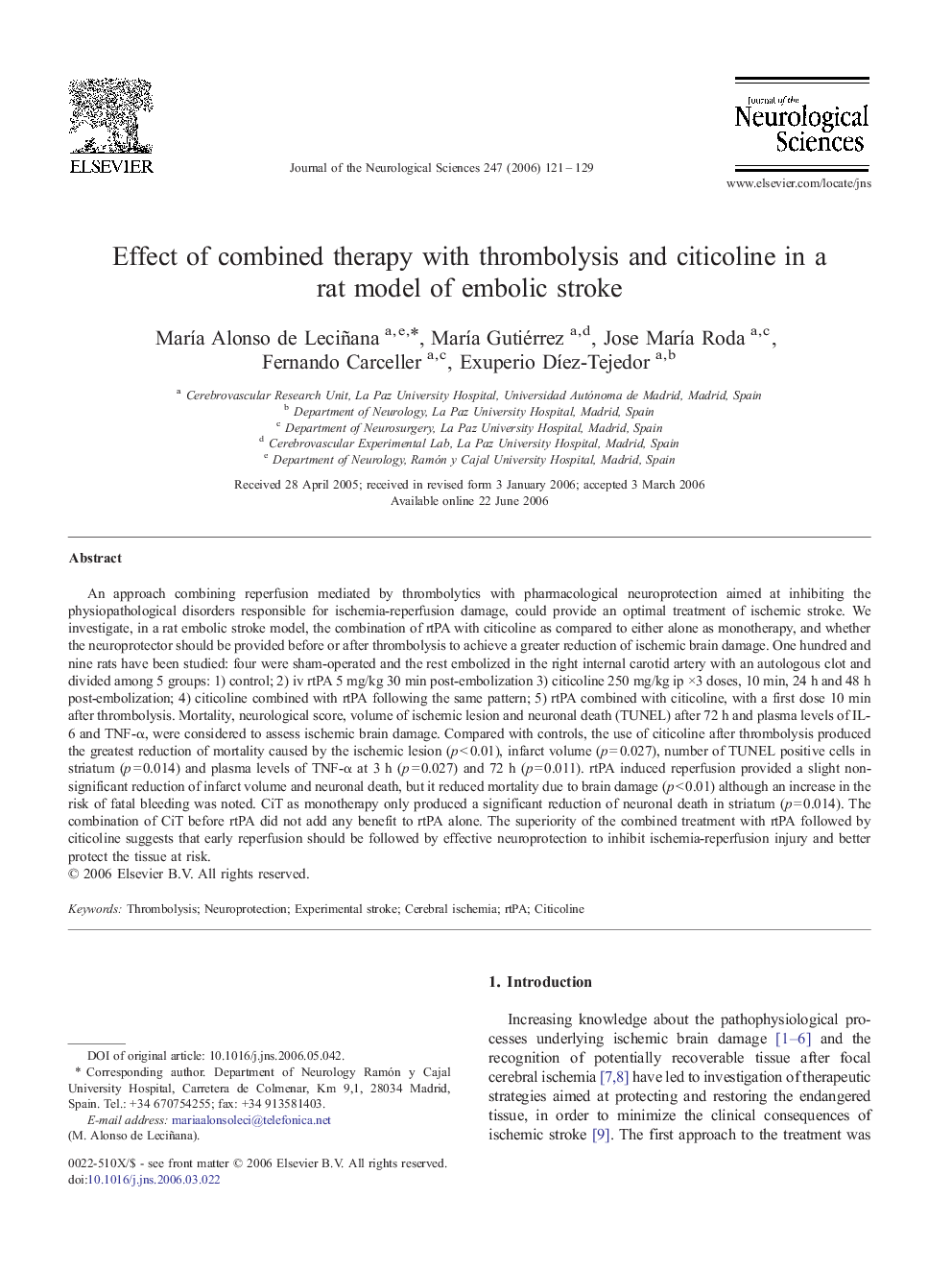| Article ID | Journal | Published Year | Pages | File Type |
|---|---|---|---|---|
| 1916731 | Journal of the Neurological Sciences | 2006 | 9 Pages |
An approach combining reperfusion mediated by thrombolytics with pharmacological neuroprotection aimed at inhibiting the physiopathological disorders responsible for ischemia-reperfusion damage, could provide an optimal treatment of ischemic stroke. We investigate, in a rat embolic stroke model, the combination of rtPA with citicoline as compared to either alone as monotherapy, and whether the neuroprotector should be provided before or after thrombolysis to achieve a greater reduction of ischemic brain damage. One hundred and nine rats have been studied: four were sham-operated and the rest embolized in the right internal carotid artery with an autologous clot and divided among 5 groups: 1) control; 2) iv rtPA 5 mg/kg 30 min post-embolization 3) citicoline 250 mg/kg ip ×3 doses, 10 min, 24 h and 48 h post-embolization; 4) citicoline combined with rtPA following the same pattern; 5) rtPA combined with citicoline, with a first dose 10 min after thrombolysis. Mortality, neurological score, volume of ischemic lesion and neuronal death (TUNEL) after 72 h and plasma levels of IL-6 and TNF-α, were considered to assess ischemic brain damage. Compared with controls, the use of citicoline after thrombolysis produced the greatest reduction of mortality caused by the ischemic lesion (p < 0.01), infarct volume (p = 0.027), number of TUNEL positive cells in striatum (p = 0.014) and plasma levels of TNF-α at 3 h (p = 0.027) and 72 h (p = 0.011). rtPA induced reperfusion provided a slight non-significant reduction of infarct volume and neuronal death, but it reduced mortality due to brain damage (p < 0.01) although an increase in the risk of fatal bleeding was noted. CiT as monotherapy only produced a significant reduction of neuronal death in striatum (p = 0.014). The combination of CiT before rtPA did not add any benefit to rtPA alone. The superiority of the combined treatment with rtPA followed by citicoline suggests that early reperfusion should be followed by effective neuroprotection to inhibit ischemia-reperfusion injury and better protect the tissue at risk.
